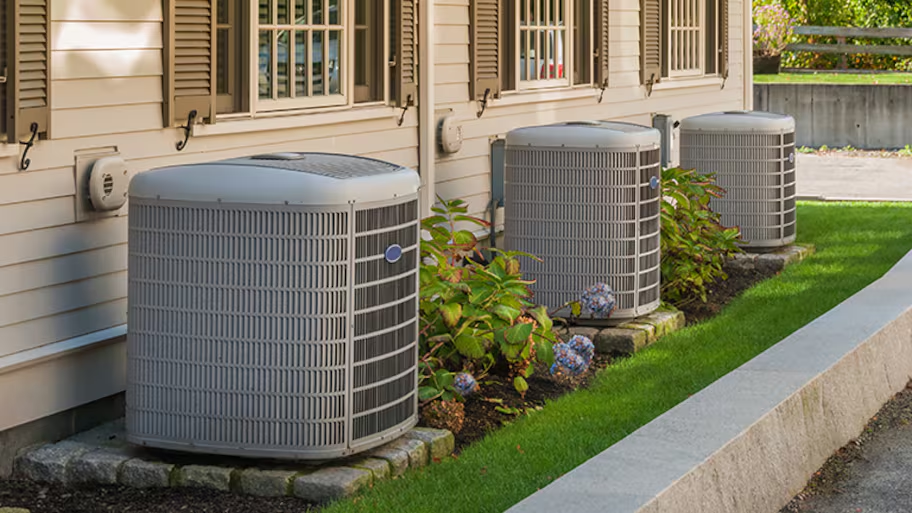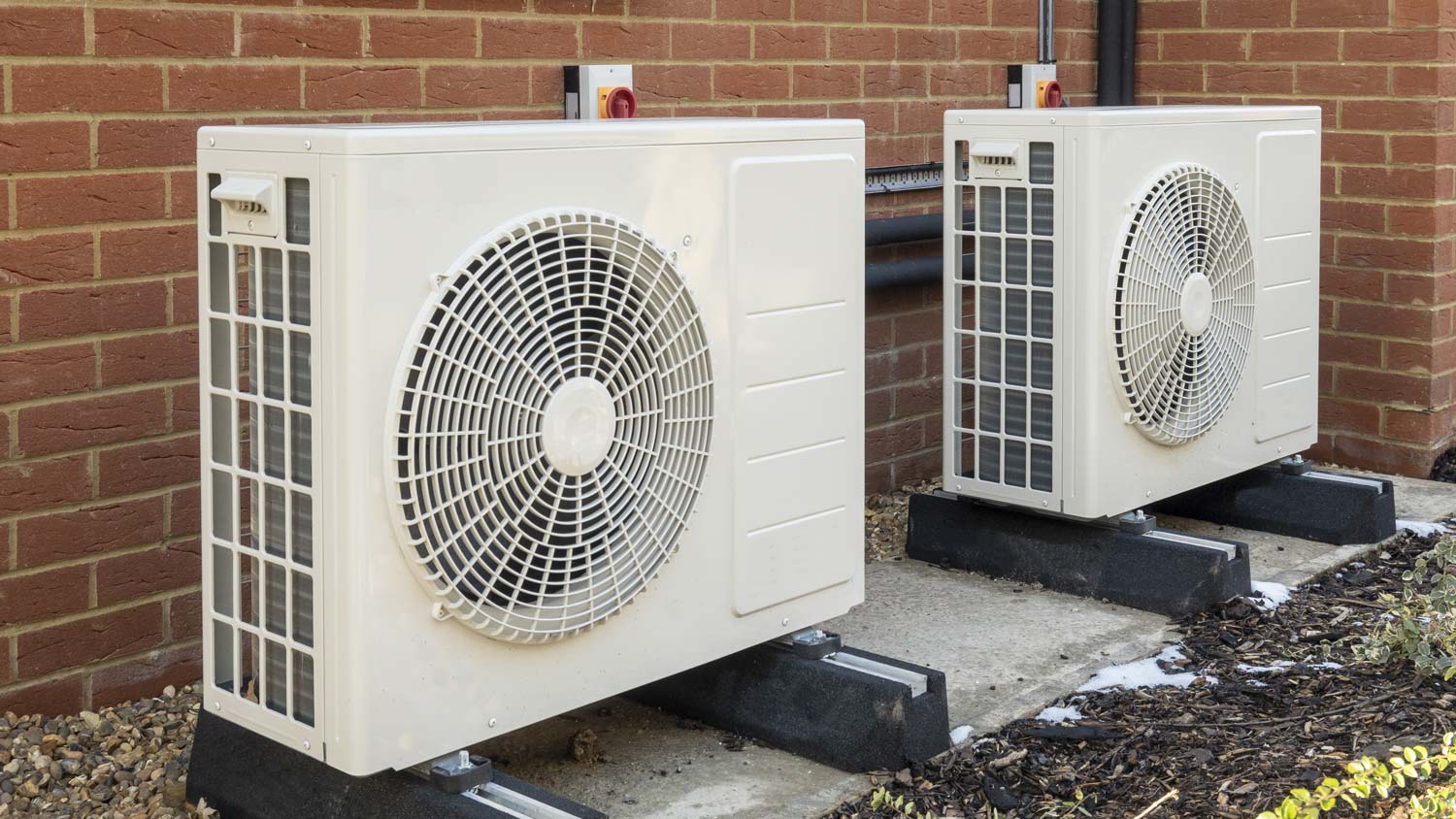
HVAC replacement costs depend on a lot of factors, like unit type, size, and labor. See what you can expect to pay for HVAC replacement here.
If your home seldom goes below freezing, a heat pump is your new best friend


Heat pumps pump outside air into your home to heat it.
They work best in above-freezing temperatures.
Heat pumps are designed to run continuously.
A good starting temperature to set is 68 degrees Fahrenheit.
With an air-source heat pump system, you’re on your way to a more energy-efficient way of heating your home that will be kind to your wallet to boot. But heat pumps work a little bit differently than traditional thermostats.
Follow these useful tips to find a heat pump temperature setting that’s right for your family and ensure your system is working as well as it can.
Before you skip right to settings, it’s important to understand what makes your new heat pump system so different from other methods of warming the house you may have used in the past.
Traditional furnaces powered by gas work by generating heat which is pushed into your home through ducts courtesy of the furnace’s blower. Your heat pump has ducts, too, but it doesn’t periodically blast air through the ducts. Instead, the pump is constantly moving air.
Heat pumps take heat from outside and direct it into the home. The catch? They can only do this when the outdoor temperature is above freezing. Heat pumps go for their backup element, which uses a lot of electricity when the temperature goes below freezing.
According to the Department of Energy, you should try to keep your system at 68 degrees Fahrenheit, but the best temperature setting for you is only something you can gauge. The temperature you choose should keep you comfortable and allow your system to run efficiently when the home is occupied and family members are awake. Use the Department of Energy’s suggestion as a starting point, and you can adjust from there using the tips below.
Gas furnaces intermittently blast air through ductwork to warm homes. But, because they aren’t constantly running hot air into your home, the hot air they release is usually warmer than the air generated by a heat pump.
Furnaces traditionally blast air at 120 degrees, while a heat pump will emit air between 90 and 100 degrees. Keep in mind that when you’re setting temps with a heat pump, a little goes a long way because the air is constantly being directed into the home. You should aim for the heat pump temperature setting that indicates how you actually want to feel.

Another way that heat pumps differ from gas-powered furnaces is that heat pumps are more efficient when they are running all the time. By that token, no matter what setting you put your heat pump on, you can expect it to run significantly longer than a furnace’s cycle setting would.
Like selecting your new perfect temperature, you’ll have to go through some trial and error to find which setting works best for you and your home.
Homeowners with blast-air furnaces may spend a lot of time finding ways to save money with their systems. This process often means keeping thermostats off when sleeping and as low as possible throughout the day. However, this method isn’t effective with heat pump systems.
It takes these systems longer to heat the home than a gas furnace-powered system would, which means they naturally need to be on longer. Additionally, setting the temperature too low could mean kicking your heat pump’s backup element into gear, which will wind up using more power, not less. Again, aim for the temperature you actually want the home to feel like and then adjust from there.
Becca Stokes contributed to this article.
My experience far exceeded my expectations. Stephen listened to what I wanted and needed, offered excellent advise, and delivered in an earlier than expected time. He has attention to detail and an eye for design while acting in a professional manner delivering exceptional customer service....
Modem installer was very kind. The tv/net/phone bill said 100 mps net speed for $169.00. Had to pay 3 payments. $79.00, $169.00, & $320.00. Now bill is $320.00 monthly. Contract states 100 mps download, phone, & net suppose to be $169.00. reps lied and triple charged us.
From average costs to expert advice, get all the answers you need to get your job done.

HVAC replacement costs depend on a lot of factors, like unit type, size, and labor. See what you can expect to pay for HVAC replacement here.

Repairing ductwork in a crawl space is frustrating and difficult, which is reflected in the cost. Learn why limited access results in a premium cost beyond just a simple increase in labor hours.

Heating and cooling system on the fritz? Discover the factors that go into HVAC repair costs and how you can save money on this crucial home update.

Learn how to add Freon to your AC unit with our step-by-step guide, and keep your home cool with a properly functioning AC unit.

Learn how to reset your boiler safely with our comprehensive guide. Don't let heating issues disrupt your comfort this winter.

Need to purchase a new gas furnace but aren’t sure which type is right for your home and needs? Taking a little bit of time to research furnaces to see which option is right for you can save you money over time. Here’s a look at five furnace types.